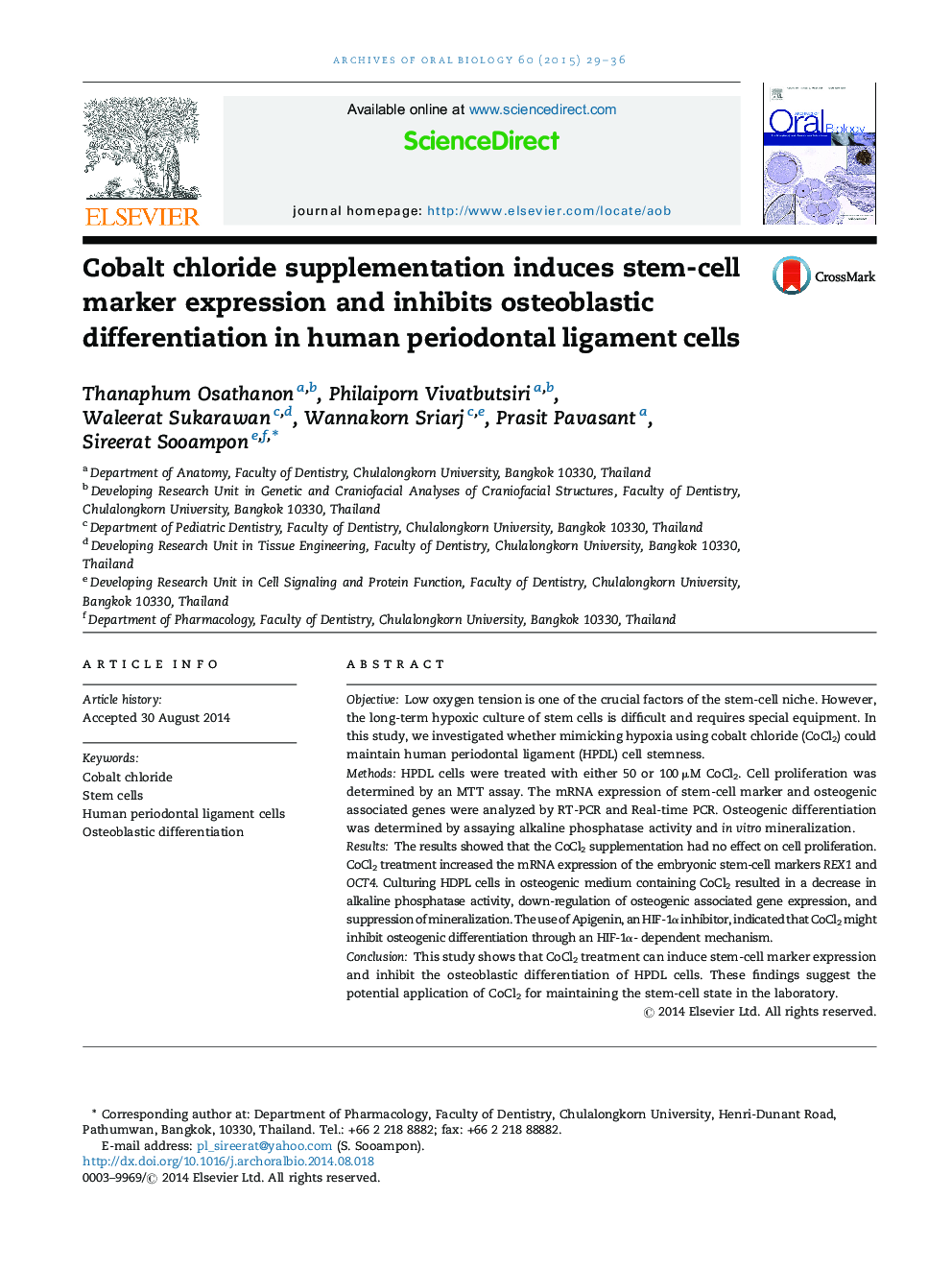| Article ID | Journal | Published Year | Pages | File Type |
|---|---|---|---|---|
| 3120858 | Archives of Oral Biology | 2015 | 8 Pages |
•We tested whether CoCl2 could maintain stemness of HPDL cells.•CoCl2 induces stem-cell marker expression and inhibits osteogenic differentiation.•CoCl2 may be an alternative approach for maintaining stem cell in the laboratory.
ObjectiveLow oxygen tension is one of the crucial factors of the stem-cell niche. However, the long-term hypoxic culture of stem cells is difficult and requires special equipment. In this study, we investigated whether mimicking hypoxia using cobalt chloride (CoCl2) could maintain human periodontal ligament (HPDL) cell stemness.MethodsHPDL cells were treated with either 50 or 100 μM CoCl2. Cell proliferation was determined by an MTT assay. The mRNA expression of stem-cell marker and osteogenic associated genes were analyzed by RT-PCR and Real-time PCR. Osteogenic differentiation was determined by assaying alkaline phosphatase activity and in vitro mineralization.ResultsThe results showed that the CoCl2 supplementation had no effect on cell proliferation. CoCl2 treatment increased the mRNA expression of the embryonic stem-cell markers REX1 and OCT4. Culturing HDPL cells in osteogenic medium containing CoCl2 resulted in a decrease in alkaline phosphatase activity, down-regulation of osteogenic associated gene expression, and suppression of mineralization. The use of Apigenin, an HIF-1α inhibitor, indicated that CoCl2 might inhibit osteogenic differentiation through an HIF-1α- dependent mechanism.ConclusionThis study shows that CoCl2 treatment can induce stem-cell marker expression and inhibit the osteoblastic differentiation of HPDL cells. These findings suggest the potential application of CoCl2 for maintaining the stem-cell state in the laboratory.
